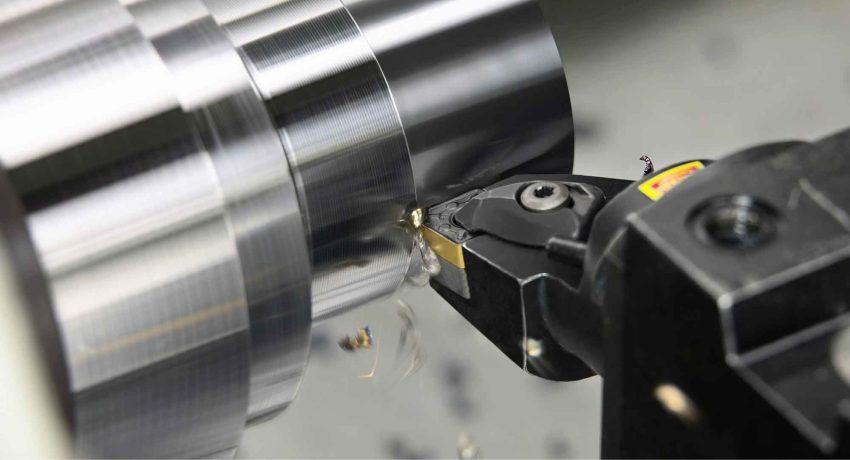In private houses, where all communications are held with their own hands, pipes often freeze over. During severe frosts, ice jams up to several meters in length are formed in them, completely blocking the lumen of the pipeline. The cause of freezing is insufficient trench depth and poor thermal insulation of the track. To solve the problem will help heating cable self-regulating for heating pipes. Pull it both in the process of laying communications, and through the existing pipeline.
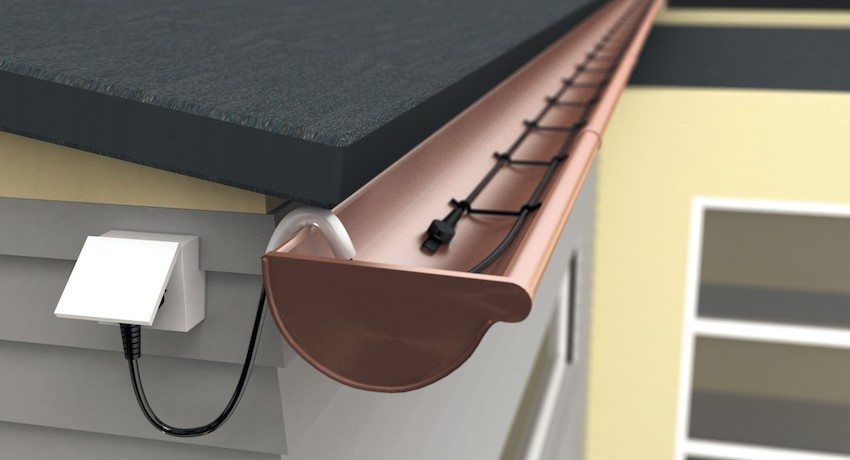
The principle of the self-regulating cable
The heating wire consists of the following elements:
- two copper conductors of increased section;
- conductive matrix (main heating and regulating element);
- internal polymer insulation;
- copper braid;
- external insulation.
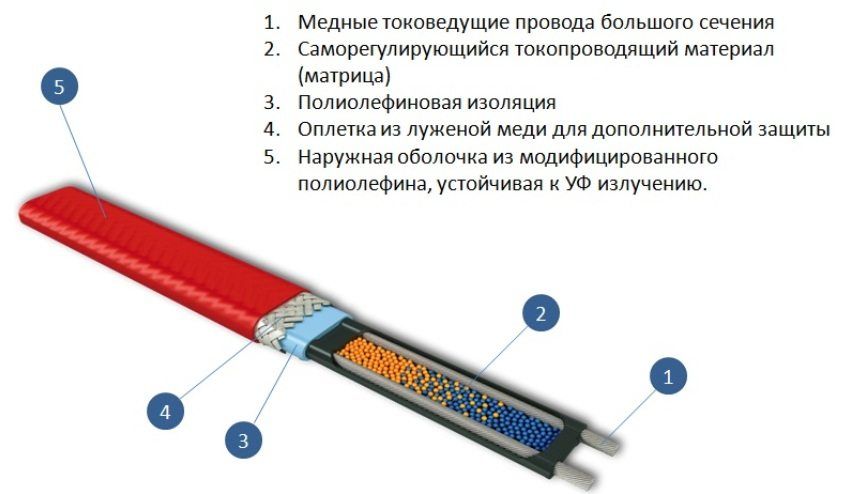
The basis of the heating cable self-regulating heating pipes is the conversion of electrical energy into heat. A characteristic feature of the wire is that it only receives electricity, but does not transmit it. The cord can be cut into sections of the desired length, from 20 cm to tens of meters. It is important to prevent sharp bending and physical abrasion of the copper core.
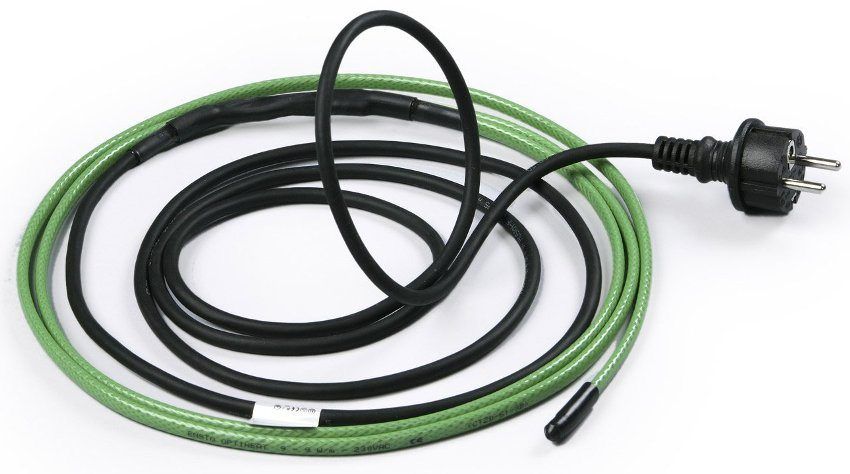
Cable self-regulation mechanism is simple. As the external temperature rises, the resistance of the conductive matrix increases, and the heat release decreases. And vice versa. Thus, properly laid wire can not overheat or burn out.

Helpful advice! Buy a cable with a small margin. If it is not enough for the winding, then part of the pipe will still freeze, and all the work will go down the drain. And too long the wire is distributed randomly through the system, which threatens to cause a fire.
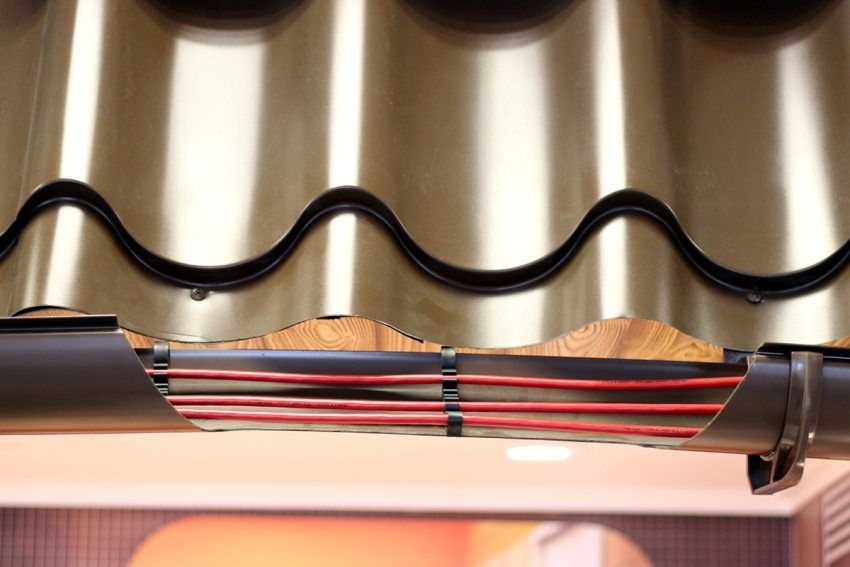
In total there are three types of heating wires – self-regulating, resistive and with resistive mineral insulation.
Self-regulating cable is most common among electrical heating systems. Its main advantages:
- ability to regulate heat transfer without control of personnel;
- substantial energy savings.

The specified cable is classified by power. Products are manufactured with a maximum allowable temperature of 70, 105 and 135 degrees. The degree of heating depends on the thickness of the copper cores – the larger the diameter of the core, the higher the temperature. Energy consumption per meter of wire is about 30 watts. It is recommended to connect the cable through a separate transformer. Heating can be carried out on pipelines made of metal, metal-plastic, polypropylene.
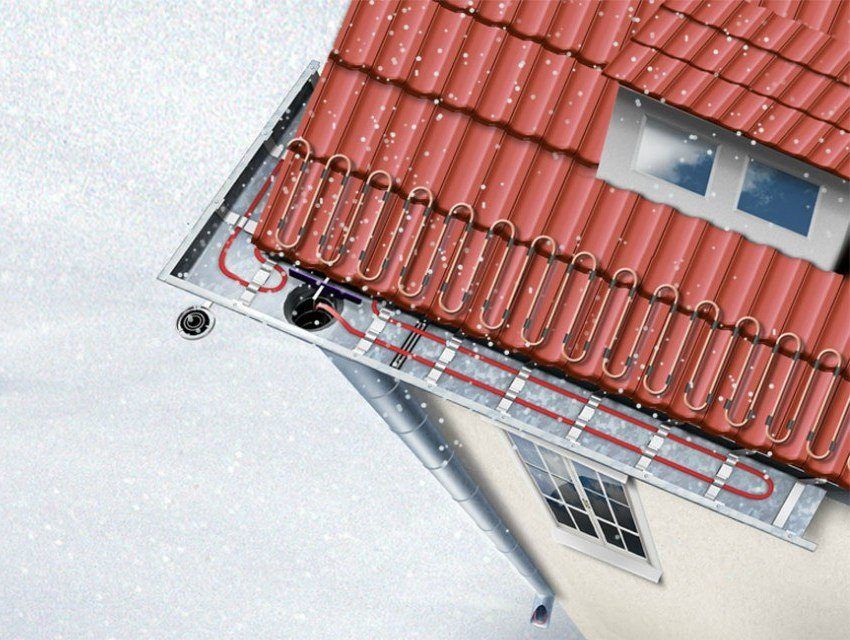
The resistive cable heats up due to the constant and unchanged resistance over the entire length. Such wires are produced in sections of a certain length, which cannot be changed. Each bay is equipped with a clutch. Self-regulation in the resistive system is excluded, therefore a large over-expenditure of electricity is possible In addition, the cable requires constant debris removal to avoid overheating.

Resistive wires with mineral insulation are used to heat objects in corrosive environments – alkaline, acid, salt. Products can also be used in hazardous areas, at high temperatures and loads.
HDPE pipes for plumbing, their varieties and methods of installation. Where they apply, their varieties. The advantages and disadvantages of polyethylene pipes and methods of connection.
A self-regulating heating cable for heating pipes is used to supply heat to the following objects:
- Pipelines for various purposes, water supply, sewer networks.
- Technological tanks, tanks, tanks with liquid.
- Sites in front of the cottages.
- Roofs and downpipes to prevent icing.
- Floor heating systems.
- Greenhouses and winter gardens.
- Terrariums, aquariums, closed biospheres.
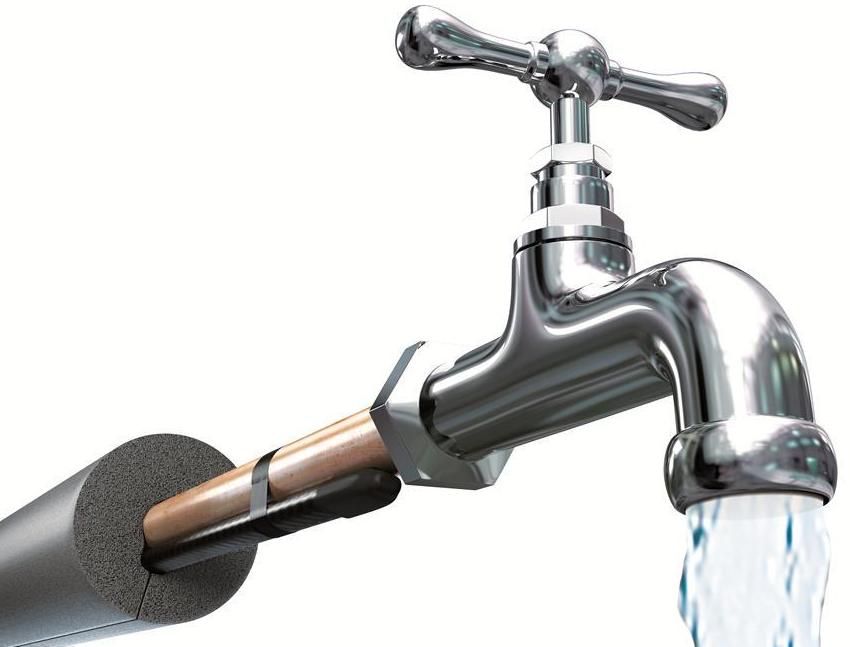
Laying of the heating element is carried out inside or outside the pipeline.
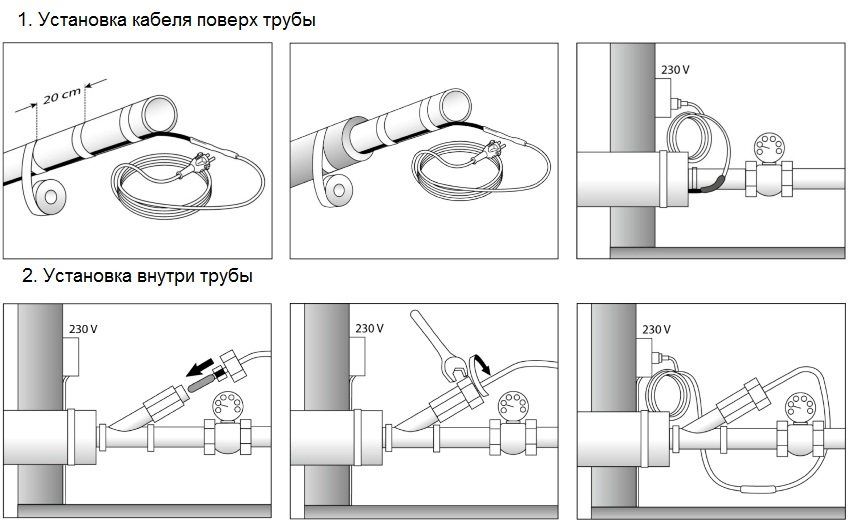
The cable is inserted into the pipe if the communication channel is already underground and there is no access to it. Then, in the place of cable entry into the underground network, a saddle is installed with a 1 cm outlet. A tube insert is screwed into it and a wire is inserted. First you need to measure the length of the section that needs heating, and adjust the size of the cable.
Helpful advice! To warm drinking water systems require products that have a food grade tolerance. Typically, the water supply cable is insulated with a safe fluorine-containing polymer.
The heating cord must not be led through the shut-off valves. If the cable insulation is damaged, a person may be shocked while using the plumbing.
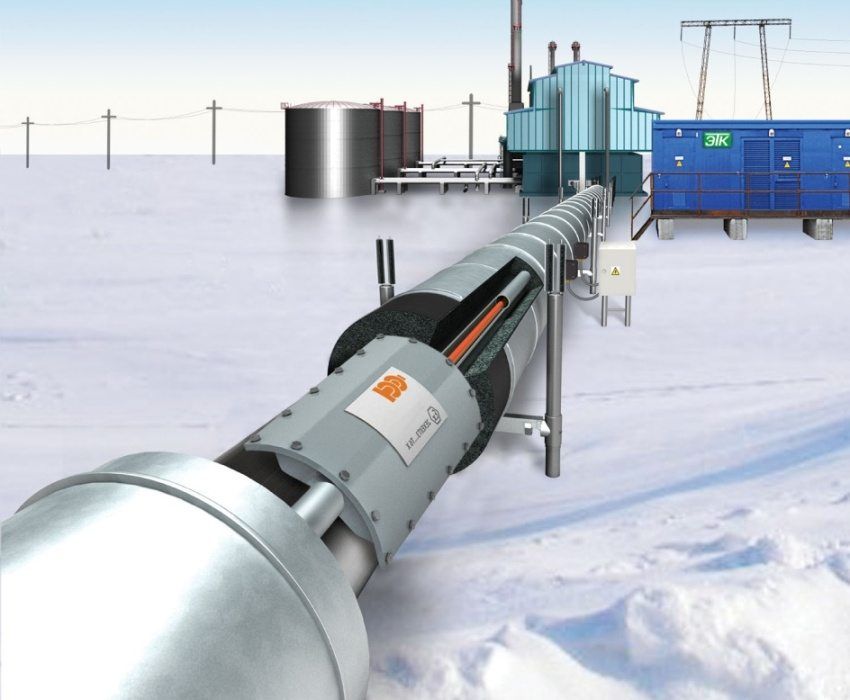
On elevated or newly laid communications, the cable is laid over the pipe. There are two main options for placement:
- linear. The wire is rolled, straightened and laid directly on the pipe. The length of the heating element in this case should be equal to the length of the intended area. The method is used for channels of small diameter (up to 50 mm). It is possible to pull several parallel cables along the pipe;
- in a spiral. On pipelines of medium and large diameter cable laid in the form of a spiral.
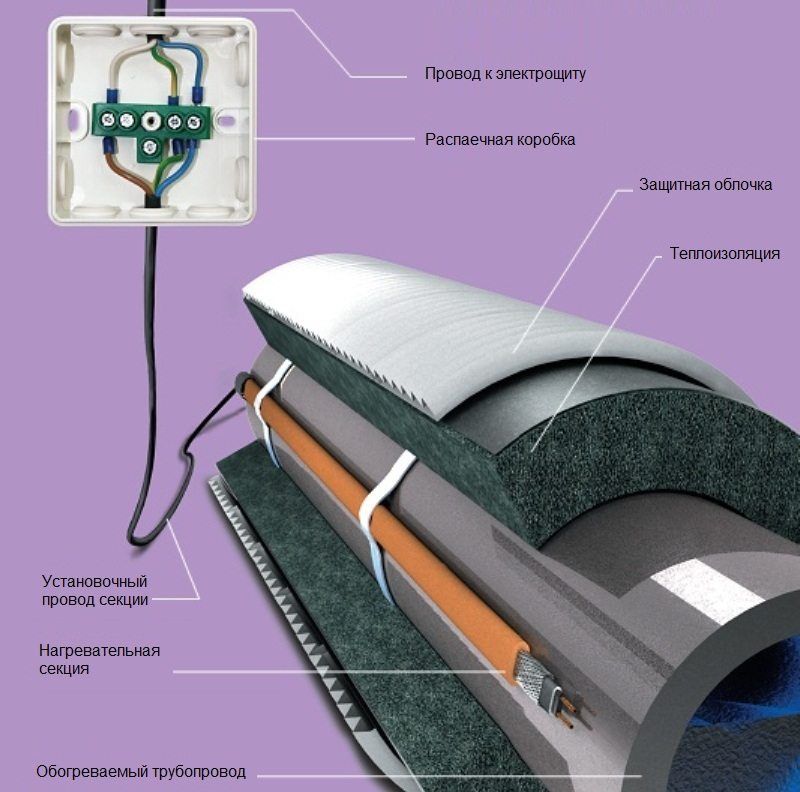
Winding or pulling the wire along the pipe, it is necessary to make sure that there are no creases, stretching, compression, chafing, and cord transition through sharp parts. Overlaying the heating cable is self-regulating for heating the pipes, the area is completely wrapped on top with adhesive aluminum tape. Regular polyethylene tape is not suitable. Next, the pipeline is wrapped with any thermal insulator in the form of semi-cylinders. Insulation joints are sealed with mineral wool and sealed with waterproof tape.

Helpful advice! Wrap the pipe with foil before installing the cable. Then the heat will be distributed more evenly.
The cable is powered by AC. For more economical energy consumption, it is necessary to install a relay and a thermostat. Then, if necessary, intelligent automation will turn the heating on and off.
